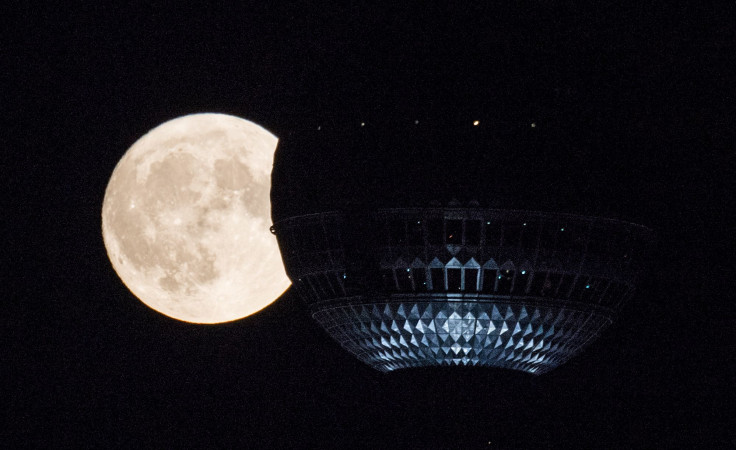Worm Moon 2021: This Weekend's Full Moon May Be A Supermoon Too
KEY POINTS
- This month's full moon will reach peak illumination this weekend
- It may be considered by some as a supermoon, too
- Skywatchers may also catch other celestial sights
This weekend's full moon has a rather interesting name: Worm Moon. It may be considered a supermoon, depending on your interpretation of its name.
This month's full moon will reach its peak illumination on Sunday at 2:50 p.m., but it will appear full for about three days from Saturday morning until early Tuesday morning, NASA said.
Just like other full moons, this one also has many interesting names. One of them is the full "Worm Moon" which, as The Old Farmer's Almanac explained, was originally thought to be because of the earthworms that appear in the spring. But another possible explanation for this is because of the beetle larvae that emerge from the thawing tree barks at this time of the year.
Other names for it include Sugar or Sap Moon and the Crow Moon, NASA said. The former pertains to it being the time of the year to tap maple trees, while the latter is because of the crows' cawing signaling the end of winter.
Supermoon or Not? It Depends
This weekend's full moon may also be considered a supermoon depending on the interpretation of the term.
"Depending upon how you interpret this definition, in a typical year there can be 2 to 4 full supermoons in a row and 2 to 4 new supermoons in a row," NASA said. "Since we can't see a new Moon (except where it eclipses the Sun), what catches the public's attention are the full supermoons, as this is when the full Moon appears near its biggest and brightest for each year."
Different publications have slightly different definitions of how close a full moon has to be in order to be qualified as a supermoon. Some include the March full moon in their list of 2021 supermoons (March to June), while others don't. There are even those who consider only the April and May full moons as the year's supermoons, as they will be the two closest full moons of 2021, NASA explained.
But whether or not this weekend's full moon is a supermoon, people can still enjoy the sight of it illuminating our evenings.
Skywatching
Skywatchers who are already out looking at the full moon may also want to catch some other celestial sights.
On Sunday, Mars will also be visible at the end of evening twilight, NASA said, and "directly overhead" will be the bright star Pollux.
"The bright stars of the local arm of our home galaxy including the constellation Orion will appear to spread from the south up toward Mars," NASA noted. "Sirius, the brightest of the stars in our sky (other than the Sun), will appear 33 degrees above the horizon in the south-southwest."
Jupiter and Saturn are also back in the sky this March after their Great Conjunction last December, but this time the two giants will be gracing the pre-dawn skies.
"They won't be as close as in December, but they're still an absolute joy to observe," NASA said.

© Copyright IBTimes 2025. All rights reserved.






















